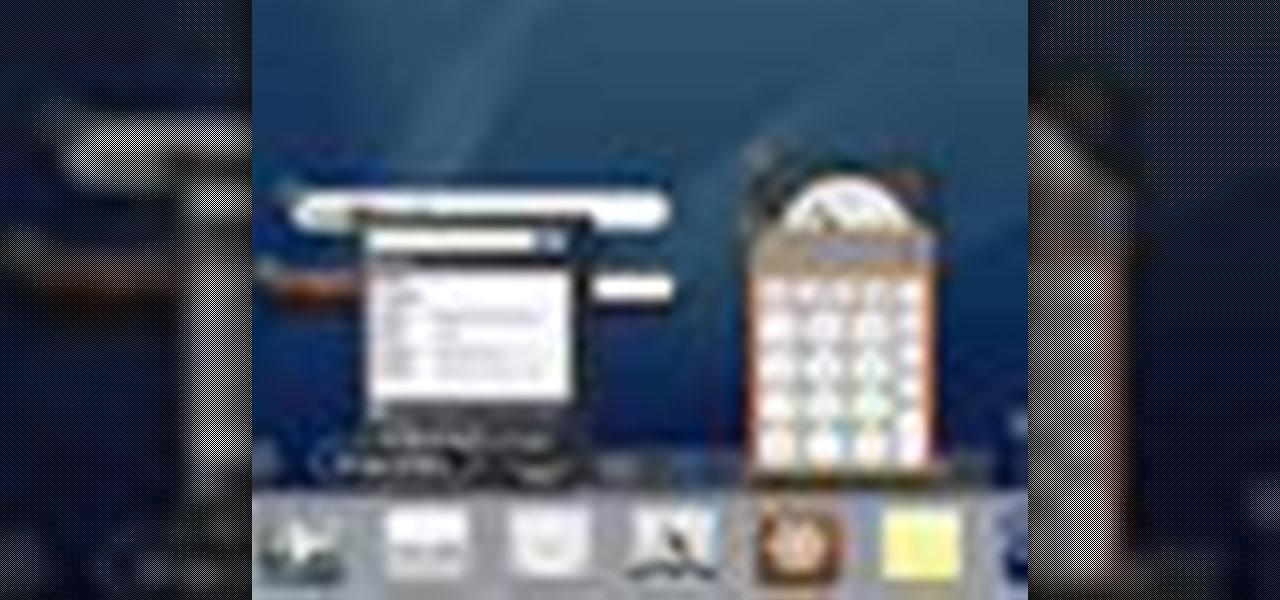

- #HOW TO ADD WIDGET TO DASHBOARD MAC OS X MAC OS X#
- #HOW TO ADD WIDGET TO DASHBOARD MAC OS X INSTALL#
- #HOW TO ADD WIDGET TO DASHBOARD MAC OS X CODE#
- #HOW TO ADD WIDGET TO DASHBOARD MAC OS X SERIES#
It is analogous to a desktop application’s icon. This image is what the user will see when s/he opens the widget bar. The image dimensions for your Default.png typically correspond to the size of your widget as specified in your ist file. This image is what the user will see when s/he loads the widget, but is also used in this case as our backdrop. It just needs to match up with the corresponding value in your ist file. Note: You can name the file anything you want.
#HOW TO ADD WIDGET TO DASHBOARD MAC OS X MAC OS X#

Icon.png – this image file is what users will see in their widget bar (the place from which users load new widgets).Default.png – this image file is what users will see while the widget is initializing.HelloWorld.html – the heart of our widget, this HTML file contains everything you’d normally see in a simple web page.Here is a breakdown of the parts that make up HelloWorld.wdgt: I have mirrored it on my server in case they move or delete it for some reason.
#HOW TO ADD WIDGET TO DASHBOARD MAC OS X CODE#
We will now take a look at the Dashboard equivalent!Īpple has been kind enough to post a “Hello World” widget on their Sample Dashboard Code page. When learning a new programming language, the first task is typically to write a trivial program to print “Hello World” on the screen. Conversely, you can explore the code and graphics for any widget by either removing the “.wdgt” extension or just control-clicking on the widget and choosing “Show Package Contents”. By adding the “.wdgt” extension to a folder, you turn the folder into a bundle which is treated by Mac OS X as one file. Widgets are simply bundles of text and image files. So, if you can make a useful web page, you can probably make a useful widget! All you need is a little information about their structure. Check it out! What the heck is a widget?Īccording to Apple, widgets are “mini-applications that let you perform common tasks and provide you with fast access to information.” The cool thing for web developers and designers is that widgets are at their heart just web pages, bundled in a specific way.
#HOW TO ADD WIDGET TO DASHBOARD MAC OS X SERIES#
The series is based on things I learned while developing Sundial. If you want to turn off this feature, use the commands below:ĭefaults write : I have begun writing a series on some advanced widget development topics The Loop, my company’s blog.

If the widget was already open before you run this tip, the widget will not appear until you put the following command into Terminal: Note: If the widget was created after the Terminal command was used, it should now be on your desktop. To put the widgets back, simply hold the widget and use the shortcut again. Use the keyboard shortcut Fn + F12 again to move to your desktop, and release your widget.Click and hold a widget you want transferred.Pull up your Dashboard with the keyboard shortcut Fn + F12.The ability to use widgets on your desktop should now be enabled. Under Applications > System Preferences > Mission Control, make sure that Show Dashboard as a Space is unchecked. Now we need to make sure that your Mac is not showing Dashboard as its own space. In Terminal, type in the following command and press Enter:ĭefaults write devmode YES & killall Dock You can launch Spotlight with the shortcut CMD + Space then search for Terminal before pressing Enter. Recommended Reading: 20 Handy Mavericks Tips & Tricks You Probably Don’t Know Getting Widgets On The Desktopįirst we need to open up Terminal. You will need to use Terminal for this and it’s a real simple tip. If you’d prefer to not switch Spaces to get to your widgets, there is a way to place your widgets right on your desktop. However, they are only available in their own separate space, meaning that you have to go to that space to use them.
#HOW TO ADD WIDGET TO DASHBOARD MAC OS X INSTALL#
Dashboard allows you to install useful single-function widgets on your Mac, for instance, the calendar, calculator, reminder, etc.


 0 kommentar(er)
0 kommentar(er)
